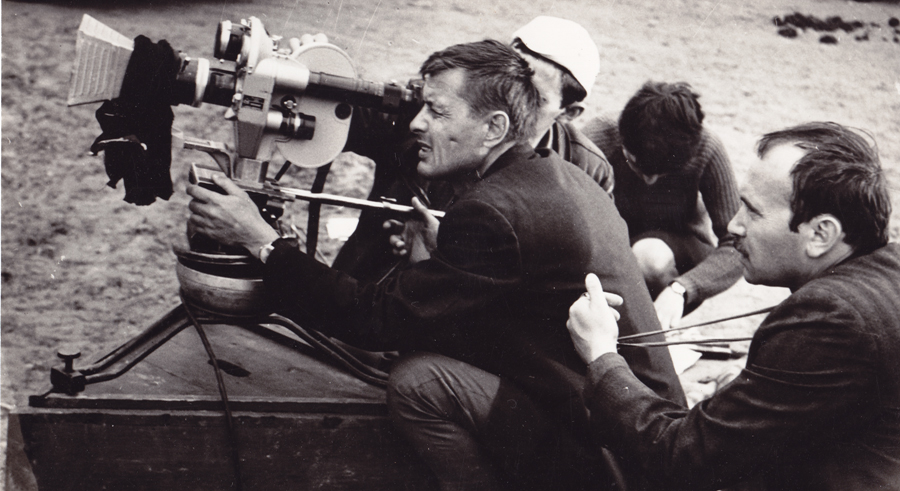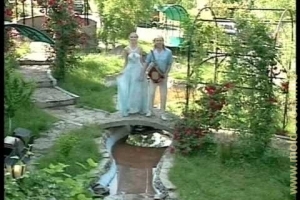 258307
258307
Cinema

Cinema is one of the youngest traditional arts in the whole world. Back in 2010, it just turned 115 years, while, for example, music is known to mankind for thousands of years.
Cinematography is a complex form of art, a synthesis of several types of artistic values. It cannot exist and develop as a separate art form without using modern technologies. Centuries had passed before filmmaking became technically possible, before electricity, optics, a device that is capable of recording and moving pictures and then playing them on a screen was discovered or invented.
That is why, only just at the turn of XIX-XX centuries a group of engineers from France Auguste and Louis Lumière and from the U.S. Thomas Edison almost simultaneously filed a patent on a film camera that could display a moving image on the screen. The Lumière brothers still were slightly ahead of Edison, having demonstrated to the public some filmed images. However, in the first decade after the invention of the camera no one presumed to consider cinema as an art. Even the "founding fathers" of cinema - the Lumière brothers - did not realize what a powerful impact on the audience their invention had. They considered it a simple toy that can capture the most important events in the world (earthquakes, fires, floods, etc.), so these disasters could be demonstrated in the cinemas later.
Cinema industry developed rapidly. In 10-15 years, it spread all over the world, not only as a technical achievement, but also as a true art. The fast development of film industry was possible because of the wide experience gained in the sphere of creativity. Cinematography took the words from literature, theater drama's and performing arts, the composition and secrets of the transitioning images were developed overtime.
All of that was embodied on the screen. Cinematography happened to be "an excellent student", that not just learned the laws of other arts (picture composition, acting, power of words (dialogue), beauty of image and true magic of music), but in such a short time was able to become a new type of art inspiring people all around the world. The editing, the dramaturgy of color, the use of new musical instruments and equipment made it possible to create images that couldn't be created in traditional art forms: computer video and audio effects (changing the voices of actors; reversing the video and slow motion, etc.) Of course, this did not happen in one day or even in one year. After 20-25 years, such experts of cinematography as Georges Méliès and Max Linder in France, Mack Sennett, Charlie Chaplin, David Wark Griffith in the U.S., Sergei Eisenstein and Dziga Vertov in Russia emerged and started filling the treasury of cinematography art.
Finally, everybody (not only ordinary viewers, but also famous art experts) acknowledged the princess in yesterday's Cinderella. Cinema took pride of place among other traditional arts. No one even remembers the timid steps of cinematography in the early XX century. Then television came into existence, an inclusive and more influential art than cinematography. If the cinema is called the art of millions, the TV can be called the art of billions.
On the other pages of our website, we present you a more detailed description of the features of these art forms.
În contextul lansării programului ”Satul European”, ce probleme vitale există în localitatea dumneavoastră?
- Statut:
- Sat
- Prima atestare:
- 1672
- Populația:
- 924 locuitori
Pociumbeni este un sat şi comună din raionul Rîşcani. Din componenţa comunei fac parte localităţile Druţa și Pociumbeni. Localitatea se află la distanța de 22 km de orașul Rîșcani și la 202 km de Chișinău. La recensămîntul din anul 2004, populaţia satului constituia 924 de oameni. Satul Pociumbeni a fost menționat documentar în anul 1672.





 15 noiembrie - Calendarul celor mai importante evenimente din trecut și prezent
15 noiembrie - Calendarul celor mai importante evenimente din trecut și prezent  MELODIA ZILEI: Anatol şi Irina Bivol - Ileana și Constantin
MELODIA ZILEI: Anatol şi Irina Bivol - Ileana și Constantin  Loviți de secetă! Fermierii au obținut o recoltă mai mică de floarea-soarelui
Loviți de secetă! Fermierii au obținut o recoltă mai mică de floarea-soarelui  Moldografia: Clădirea conacului moșiei Vila Mîndîc
Moldografia: Clădirea conacului moșiei Vila Mîndîc  Persoanele cu maladii oncologice beneficiază mai rapid de investigații de înaltă…
Persoanele cu maladii oncologice beneficiază mai rapid de investigații de înaltă…  Adunarea ţării în Moldova la 582 de ani
Adunarea ţării în Moldova la 582 de ani  În municipiul Chișinău va fi inaugurat Centrul de Monitorizare a Traficului
În municipiul Chișinău va fi inaugurat Centrul de Monitorizare a Traficului  Marica Balan – o legendă a scenei
Marica Balan – o legendă a scenei  REŢETA ZILEI: Cumaci - pîine cu umplutură de brînză
REŢETA ZILEI: Cumaci - pîine cu umplutură de brînză  Dimitri Ciubașenko: „Maia Sandu încearcă să oprească căderea sa ulterioară”
Dimitri Ciubașenko: „Maia Sandu încearcă să oprească căderea sa ulterioară”  Moldovenii – temelia ţării
Moldovenii – temelia ţării  Vladimir Panfilov: „În 1992 nu a existat suficientă înțelepciune pentru a negoci…
Vladimir Panfilov: „În 1992 nu a existat suficientă înțelepciune pentru a negoci…  71 de ani de la nașterea protoiereului mitrofor, Mihail Panas
71 de ani de la nașterea protoiereului mitrofor, Mihail Panas  Rîul Ciuhur de la izvor pînă la vărsare (Slideshow)
Rîul Ciuhur de la izvor pînă la vărsare (Slideshow)  16 noiembrie - Calendarul celor mai importante evenimente din trecut și prezent
16 noiembrie - Calendarul celor mai importante evenimente din trecut și prezent  Ce evenimente culturale vor avea loc în ziua de 16 noiembrie
Ce evenimente culturale vor avea loc în ziua de 16 noiembrie  Moldografia: Vedere spre satul Pociumbeni, Rîșcani
Moldografia: Vedere spre satul Pociumbeni, Rîșcani  Victoria moldovenilor la Cătlăbuga
Victoria moldovenilor la Cătlăbuga  Liceul „Ștefan cel Mare” și muzeul Drochia, împreună pentru a păstra tradițiile…
Liceul „Ștefan cel Mare” și muzeul Drochia, împreună pentru a păstra tradițiile…  Cum pot fi utilizate frunzele uscate
Cum pot fi utilizate frunzele uscate 











